.I'm not trying to convince you of a Bolognese invention scenario here...
I know, I know. But your opinion on this matter is very important to me. Thanks for developing these exposures.
.I'm not trying to convince you of a Bolognese invention scenario here...
Why do you state as fact things that you don't know to be fact - that are simply your beliefs? E.g. -Huck wrote:Ross G. R. Caldwell wrote: Who played it? The professional elite (that the courts had to employ) - lawyers, doctors, military officers.
Military officers/politicians - Jacopo Antonio Marcello (Milan-Monselice, 1448-1449).
Diplomats - Scipio Carafa (Milan, 1448).
Jurists - Ugo Trotti (Ferrara, 1456).
Physicians - Francesco Acerbi (Mantua, <1465).
The earliest dated evidence of carte da trionfi is February 10, 1442. No matter how much you want to believe the Cary Yale was the "wedding deck" of Francesco and Bianca Maria, there is no evidence that it is was. You cannot state as fact, or even as "probable", that Marcello "naturally knew" of Triumph cards!Jacopo Antonio had close contact to Sforza already at the time of the wedding 1441, so he naturally knew Trionfi cards.
Marcello is writing in 1449; he says he got the cards "last year", i.e. 1448. Do you know the exact date? I didn't think so. He says the conversation with Scipio happened then - i.e. "last year". For Marcello it was 1448, and since we don't know the exact day and month, we might as well call it 1448.Scipio Caraffa in 1449 (!) didn't know Trionfi cards, when he saw them.
How do you know any of this? Defending games of skill and games of part skill and part chance was typical for moralists. It had nothing to do with particular preachers. What makes you think Borso had anything to do with it - much less, "likely" that Borso had anything to do with it?Ugo Trotti defended Ferrarese "games of skill" against attacks, likely from Padova and the general anti-cards movement by Capristanus in Germany. The words about cards take 3 sentences, the whole text has about 32 pages or so. Likely he had gotten a commission from Borso for this text.
Who said he was poor? I said "professional elite" - hardly poor or common people.Francesco Acerbi was not a poor man ...
... as he also had other objects of art.
I found this snippet here:
http://books.google.com/books?id=7rifAA ... a&lr=&cd=1

Marcello speaks of Trionfi cards, ergo he must have had an imagination, what this terminus meant.The earliest dated evidence of carte da trionfi is February 10, 1442. No matter how much you want to believe the Cary Yale was the "wedding deck" of Francesco and Bianca Maria, there is no evidence that it is was. You cannot state as fact, or even as "probable", that Marcello "naturally knew" of Triumph cards!Jacopo Antonio had close contact to Sforza already at the time of the wedding 1441, so he naturally knew Trionfi cards.
His letter to Isabelle seems to indicate that he first knew the game when he was given a pack of the cards "last year", i.e. 1448. What evidence do you have that he knew it earlier?
Scipio Caraffa had been Venetian diplomat at the French court. Francesco Sforza had written to Renee d'Anjou in February 1449, introducing Marcello to Renee, offering, that Marcello might be useful to Renee. Renee offered Marcello some function. For this reason Scipio Caraffa took the journey from France to have some talk with Marcello and for the reason that he got some function Marcello needed a gift for Isabella of Anjou, otherwise he wouldn't have had this interest.Marcello is writing in 1449; he says he got the cards "last year", i.e. 1448. Do you know the exact date? I didn't think so. He says the conversation with Scipio happened then - i.e. "last year". For Marcello it was 1448, and since we don't know the exact day and month, we might as well call it 1448.Scipio Caraffa in 1449 (!) didn't know Trionfi cards, when he saw them.
How do you know any of this? Defending games of skill and games of part skill and part chance was typical for moralists. It had nothing to do with particular preachers. What makes you think Borso had anything to do with it - much less, "likely" that Borso had anything to do with it?Ugo Trotti defended Ferrarese "games of skill" against attacks, likely from Padova and the general anti-cards movement by Capristanus in Germany. The words about cards take 3 sentences, the whole text has about 32 pages or so. Likely he had gotten a commission from Borso for this text.
Who said he was poor? I said "professional elite" - hardly poor or common people.[/quote]Francesco Acerbi was not a poor man ...
... as he also had other objects of art.
I found this snippet here:
http://books.google.com/books?id=7rifAA ... a&lr=&cd=1
Zorli cites his sources when it comes to sources we all know, the documents from Ferrara. But it would be nice to know what "Italian documents" he is referring to in the second to last paragraph above (and also what he means by "ruff." The Italian version of the article (at http://www.letarot.it/L%27Industria-Bol ... 8_ita.aspx) contains neither of the last two paragraphs just quoted).The famous Ferrarese payment dated February 10 -1442 is the first known document about “trionfi”. The Este court paid four fine and very expensive hand-painted decks. These four packs were probably meant to celebrate the new Marquis, Lionello d’Este. We know that the Ferrarese court loved to play a card game called Imperatori. We are comfortably sure that the Este did not produce nor buy trionfi before that date. Possibly, they did not like the game. Bianca Maria Visconti, Milan duke Filippo Maria’s daughter, had just stayed in Ferrara for an eight-month visit. It is therefore natural to presume that the Ferrarese court received the triumphal deck idea from Milan.
Few months later, on July 28 – 1442, the Este paid Marchionne Burdochi, a Bolognese merchant. They bought from him a relatively inexpensive trionfi deck for the lord’s adolescent brothers to play the game.
An articulated high-class court item was therefore shortly ready for the game at a much lesser price. That deck could have been custom made by the Bolognese. It is curious that a brilliant and gambling court had only one cheap deck made for the game. It is more probable that the Bolognese already knew and currently produced triumph decks. The boys wanted it and got it in the market.
In XV century, Bolognese University knew her last momentum. Since the end of the XII century, Bologna hosted the children of the European upper class to teach them laws. The wealthy young crowd was a steady source of business. To reproduce texts and codes, the Bolognese were forced to pioneer duplicative techniques. The organization of sheets called book seems a mid-XIII century Bolognese invention. A paper-mill facility was available as early as 1289. Since the first half of the XIV century wood cut techniques were employed.
...
It is obscure how the triumph deck and idea arrived to gambling Bologna.
The Italian documents we have makes scholars to assume that trionfi are a Milanese invention, datable around 1420-25. The bulk of the new game was the ruff – and the trumps organized in a fifth suit. The natural communication vehicle to Bologna may have been the Milanese court students. Moreover Milan occasionally took Bologna and held it for a few years.
We know nothing about early Milanese packs. The 1447-1450 Milanese political unrest and civil war destroyed the Milanese archives. Only splendid remains of celebrative court decks are left, dated about 1445. Lombard popular trionfi packs are hinted to by a Francesco Sforza’s letter dated 1450.
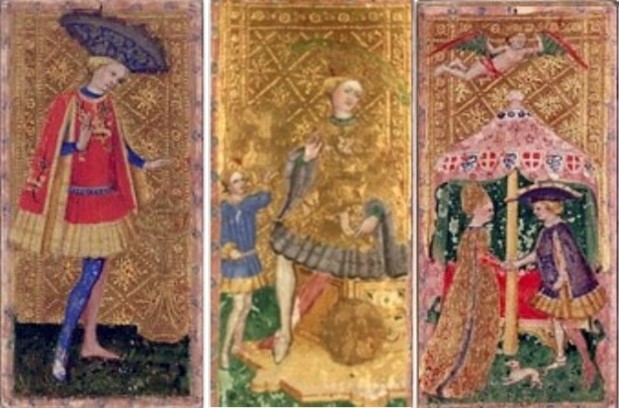
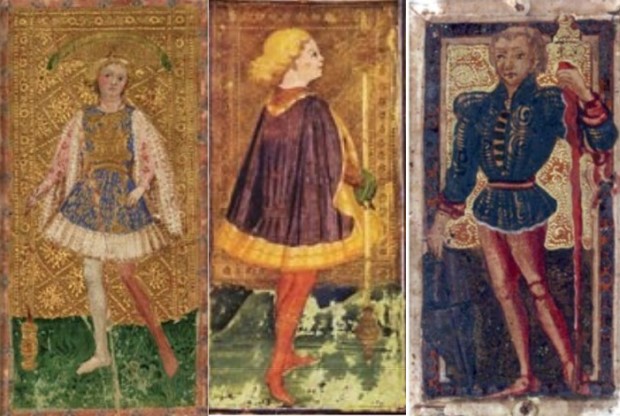
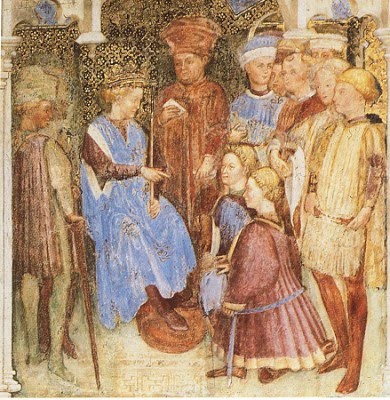
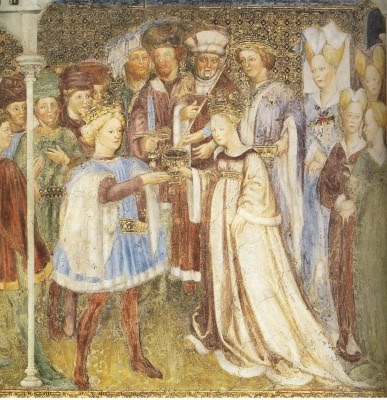
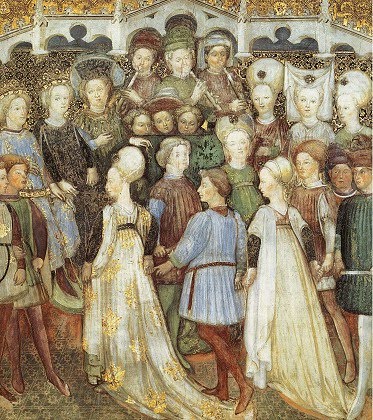
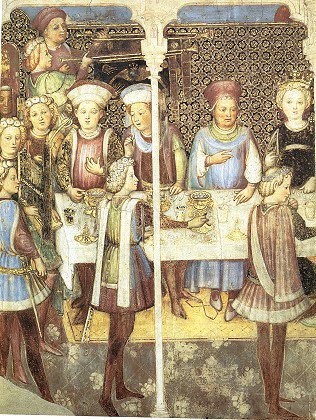

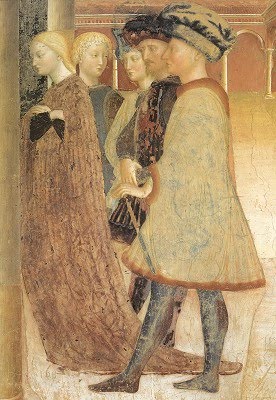
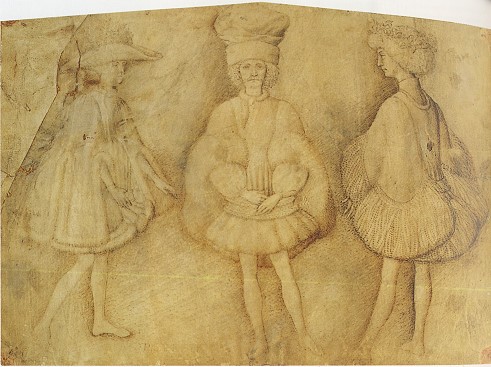
What writes Hind about woodcuts in the 1420's?It also seems to me that if Milan invented the tarot in the 1420's, and woodcut technology was massively in use there then (as Hind documents in his History of Woodcut Vol. 1) ...

Zorli talks about Saint Bernardino, without citing sources. Instead of quoting Zorli, I cited Hind. My reference was to the citations at viewtopic.php?f=12&t=463&.hilit=woodcut ... dino#p6029, about Saint Bernardino and also the carmaker in Florence. Presumably cardmakers in Bologna would have the same technology as in Florence. And yes, you did challenge Hind on Saint Bernardino. But still, it makes sense that there would be cardmakers in Bologna then.Playing cards arrived to Europe about 1370. New trends arrive quickly to a brilliant and cosmopolitan centre. At that date, Bolognese manufacturers were ready to manufacture cards for wealthy and gambling students.
Production and sales had to be quickly significant, so that as early as 1405 Baldassarre Cardinal Costa issued the first known regular taxation of playing cards.
Saint Bernardino da Siena, a celebrated Franciscan travelling preacher, went to Bologna in 1423. With a memorable sermon, he attacked the local main corruption : gambling and cards. His contemporary biographer reports about a card manufacturer complaining to the Saint of the loss of his business. The peculiarity of the sermon and the presence of the manufacturer confirm that Bologna was widely gambling and producing cards.
After 1423, many other card-manufacturing documents are spread throughout the century in Bologna. No wonder that in 1442 the Bolognese had cheap triumph decks available.
It is widely held that the Bolognese started producing popular triumph decks as early as 1430. At that time, the state-of-the-art printing industry was in Germany. German card manufacturers are documented twice in Bologna in the mid-XV century. The first known document about playing-cards massive production and export is reported in Bologna as early as 1477. No wonder that the Bolognese tarot iconography and hierarchy scale spread all over central and southern Italy. Bolognese card manufacturing fame lasted many centuries.
I don't know of any interaction between Marchione Burdochio and Francesco Sforza. I also don't know of any instance when anyone asked Burdochio to get any decks. As far as I know, the only time he is connected to a deck is July 28, 1442, in Ferrara, selling a deck to the Este servant Iacomo for the boys Ercole and Sigismondo.I'm not sure where Burdochio was when Francesco asked him to get the decks. Somehow I thought it was Florence.

: Yes, you're right. I meant Francesco's letter to Antonio Trecho, December 1450. I assume that is the one that Zorli is talking about when he says, "Lombard popular trionfi packs are hinted to by a Francesco Sforza’s letter dated 1450," the one that says,I don't understand what you are talking about here -
Where is Trecho when Francesco writes this? Francesco is in Lodi, about 50 km southeast of Milan. When I read the next letter, four days later, in which Francesco is pleased to learn that the proceeds from the wheat harvest will be given to "our soldiers"--and happy to have received two decks of ordinary cards--it would seem that Trecho was indeed in Lombardy, even Milan, because that's the only place where harvest proceeds could be assigned like that, including giving the wheat to "Tristano's squadron." Also, the quick reply suggests that the two are both in Lombardy.To Antonio Trecho texaurario,
Voliamo, subito recevuta questa, per uno cavallaro ad posta, ne debbi mandare doe para de carte de triumphi, della piu belle poray trovare; et non trovando dicti triomphi, voglie mandare doe altra para de carte da giocare, pur delle piu belle poray havere.
To Antonio Trecho, treasurer:
As soon, as this is received, we want you to send, by a mail rider, two decks of trump cards, of the finest you can find; and if you do not find said trumps, please send two other decks of playing cards, of the finest that there are. (http://trionfi.com/0/e/06/)